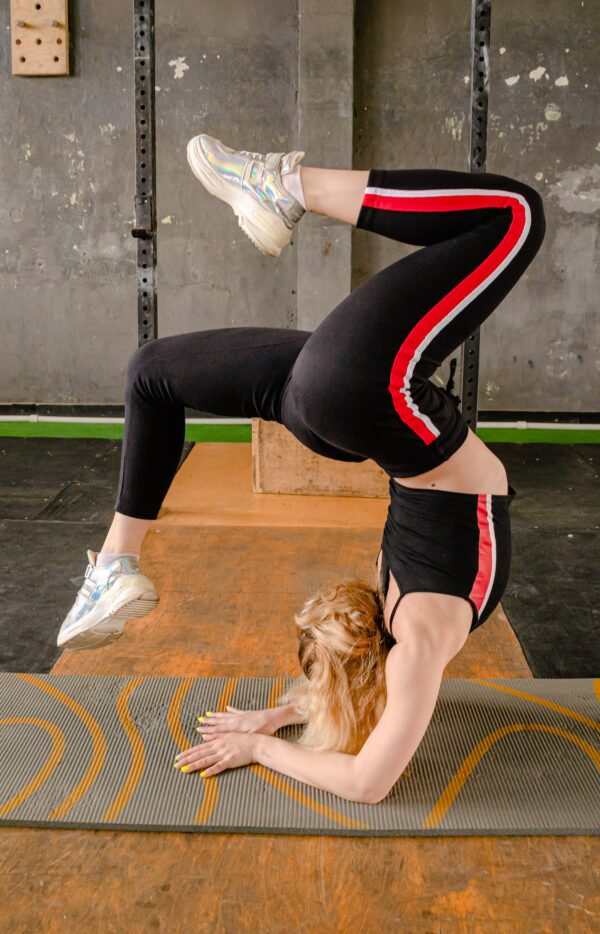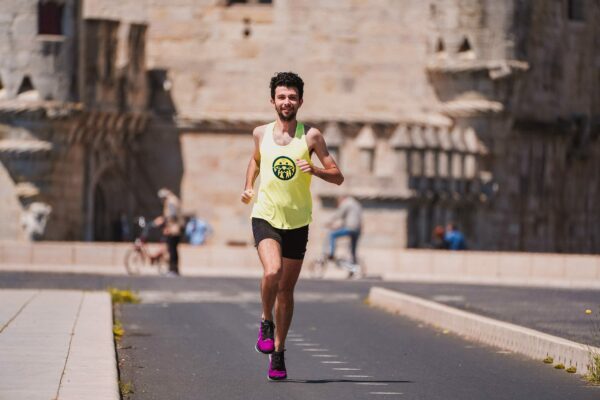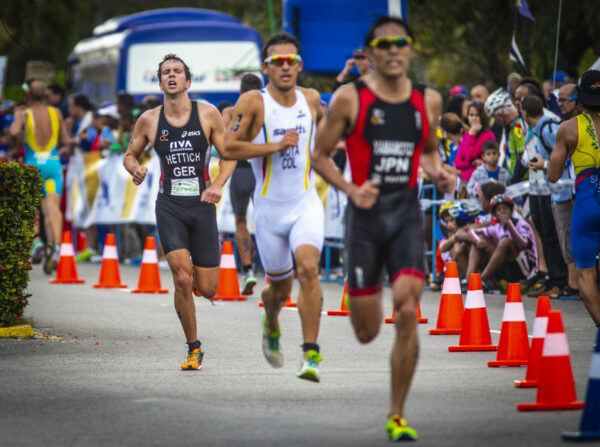Running training is a broad concept until you know your starting point. The Truth About Great Running Training for you is to be able to complete a running project from your current level. Then, you build up distances from maybe walking 20 min. In the beginning, run 5 km, then 10 km, etc. depending on your starting point and your goal with the running training. The most important to know is that your body needs adaptation to cope with the loads of running.
The SMART-Model in Running Training

When I was very young and studied NLP, I asked myself “what is it that makes some people repeatedly reach the goals they set while others fail time and time again? Maybe it’s the mental approach to the task. A successful approach seems to be the following: If you want to meet your goals, you must set them SMART!
I Learned to set goals from a model called SMART. SMART is an acronym that stands for Specific, Measurable, Achievable, Relevant and Time-based. Each element of the SMART framework works together to create a goal that is carefully planned, clear, and trackable.
Let’s look at the model with the 5 parameters in details below:
| S | Specific | Make your goals specific and narrow for more effective planning |
| M | Measurable | Define what evidence will prove you’re making progress and reevaluate when necessary |
| A | Attainable | Make sure you can reasonably accomplish your goal within a certain time frame |
| R | Relevant | Your goal should align with your values and long-term objectives. |
| T | Time-Based | Set a realistic ambitious end-date for task prioritization and motivation |
Designing or adjusting your goals in this SMART way increases the likelihood that you will actually achieve what you want. Maybe you can remember goals in your past – like me that were not met because one of the above parameters “fell out”? Was the goal in the end just not attractive enough? Was it unrealistic? or did it belong in a dream world?
SMART-goals in running
When you want to start with running training, then you can with benefit set-up your goals SMART.
You can adjust the underlying data, such as changing your exercise pattern, your diet, or your weight, and thus increase the likelihood of what is realistic. SMART goals are one of your tools to manage your running goals.
They help you constantly focus on the goal. Being able to focus is an essential component of the mindset you need to have to complete your running project particularly if you want to run a half or a full marathon.
So, practice making it a habit to work on your SMART goals and evaluate the five parameters. Look at the situation and adjust when necessary. As you may have noticed, you can take this process with you for the rest of your life, both in your work life and in your private life.
You can also let the interaction go the other way. For example, if you are successful in your working life, so transfer this process to e.g. your running project.
Outstanding Motivational Strategies

Motivation is the driving force behind the action. The driving force sets the direction toward the goals and sets actions in motion. However, it is the will that ensures that the goals are achieved.
There are basically two motivational strategies or driving forces if you will. One of them is towards and the other is away from. You want e.g. move towards a slim and beautiful body and away from an overweight and unhealthy body. You can advantageously examine WHAT motivates you and what the DIRECTION is for your motivation.
I Want To Lose Weight!
For example, if you are most motivated to lose weight (Away from being overweight) you can actively go into this away-from-feeling and thus get an even greater incentive to do what needs to be done e.g. to practice running, change diet, etc.
If you want to be very specific in figuring out WHY you want to achieve your running goal, you can ask yourself these questions below, which also will give you permanent motivation, so you can spot your purpose in your efforts to reach your Goal:
• Why is your goal important?
• Why will your goal make a difference in your life?
• Name all the reasons why you want to achieve this goal?
• What do you want to get out of it?
• How will your life look like once you have reached your goal?
• What is your purpose? (related to the goal)
This was a little intro to what might motivate you to start with running training. Since I don’t know your starting point I will start with running tips for the physically inactive and then continue with the three elements of running training for the more experienced runner.

If you can walk 30 minutes a day most days of the week, then let this be the starting point. Next, you need to slowly use the time to run. Start by walking for 10 minutes and then insert one or more running intervals of two minutes duration.
Get the best start
You should try to run with such high intensity that you reach the talking point. This means that you can still talk, but that the sentences are no longer whole, they break over and are broken. Be active for 30 minutes and gradually extend the intervals, but walk the last 5 minutes.
Eventually, you can run for 15 minutes. then you can just walk for 5 minutes at the start, run 20 minutes at the talking limit, and finish running at a leisurely pace. Then you increase the run slowly.
If you can run continuously for 30 minutes, you are able to run about 5 km. Now you can use a route map and measure a distance of 5 km, and run this route without stopping.
If you are completely inactive from the beginning and therefore start walking the first 6 weeks, it’s realistic that you can reach your goal in 16 weeks. Check for yourself if you can settle for less if you for example do other sports but be sure to run slowly and certainly not too fast to avoid injuries.
So, stick to a date to be able to run 5 km without stopping and you have reached your first major running goal. Then you can go for the next goal if you wish. You can start with a basic program and continue with the specialization.
Running Training 3 Basic Elements For Experienced Runners

When you have to put together a training program, the dilemma will often be that the more intensively you train the faster and greater effect you get. But at the same time, you increase the risk of injuries extend the recovery time, and limit the amount of training you can handle.
When it comes to endurance training, the amount is at least as important as the intensity, so to get the optimal effect of the training, most people choose to combine training with high and low intensity to both get enough volume training but also push the body for improvements.
Running training is very much a question of the art of the possible because the closer you get to reaching your full potential as a runner, the harder it is to achieve improvements.
You will experience what is called the flat part of the utility curve, i.e. where more of the same training provides relatively small improvements, and you therefore, have to add other types of training.
But at the same time, you must always include the risk of injury, as you are moving on the edge of your maximum performance. Although you know now know that several kilometers will be able to provide an improvement, it is not certain that it is the best choice if it also increases the risk of injury.
Adjust your training
The most destructive thing you can do for your performance is not to train too little but to train a little too much! The price may well be that you move all the way back to the start and then there is a long way up again to the same level.
As a starting point, all physical training and thus also running training entails a breakdown of the tissue that is loaded. Once the run is over, the body will start rebuilding the decomposed tissue.
The reconstruction phase has as its first goal to regain the strength of the loaded tissue and to create or restore the balance in e.g. the energy stores of the muscles and in the amount of fluid and hormones in the body.
If this balance is exceeded too much, there will be a breakdown instead of a build-up, which can have consequences with injuries as result. When reading literature on running training and especially on the internet, many physiological terms are used which can be difficult to understand.
To make it simpler, there are three elements that all are part of good running performance when it comes to longer distances from approx. 3 km and up. These three elements are maximum oxygen uptake, aerobic capacity and running economy. So, let’s look at these to give an insight into how to become a better runner.
Maximum oxygen uptake VO2 max.

The maximum oxygen uptake describes how good a person is at producing energy using oxygen. The maximum oxygen uptake corresponds to the maximum amount of oxygen that the body’s tissues, including the muscles, can absorb from the blood.
Determining the oxygen uptake is the heart’s pumping speed, the pulse, the amount of blood pumped around per. Heartbeat (stroke volume) and the ability of the muscles to absorb oxygen from the blood.
The best way to improve VO2max. on, is to train with very high intensity i.e. work up to 90 – 95% of maximum heart rate. This can only be done by running intervals, speed games, in hills, or by a very hard pace run. The optimal interval amount is in the range between 4 and 8 km per. training session.
If you run 1000m intervals, there should be between 4 and 8 intervals in a training session. If the interval amount is too large, it will similarly also require such a long recovery period that there is a risk that the recovery is not completed before the next training session.
Running Training – Aerobic capacity
in addition to the body being able to send oxygen to the muscles, the working muscles must be effective in using the oxygen and in getting rid of the lactic acid quickly if they have worked partially without oxygen for a period – such as running up of a hill.
This determines how close to your maximum oxygen uptake you can continuously work. It is also called the acid limit. If you want to run long distances, it is crucial for the pace to have a high acid limit otherwise, the acid will quickly accumulate and you will have to slow down because the muscles get tired quickly when working without oxygen.
On the really long runs, well over one hour, the muscles must also be good at burning fat, otherwise, it becomes the limiting factor when the sugar depots in the muscles, as previously mentioned, runs out (you meet the wall).
Aerobic capacity is partly determined by muscle fiber distribution, as the slow fibers are significantly better at burning oxygen and fat. But it can also be improved through sustained endurance training.
The quantity is of great importance to have an effect here. You can improve your aerobic capacity with large amounts of intensive training, but for most people, it is virtually physically impossible to train enough amount at high intensity without risking overtraining and injuries.
Therefore, most runners train their aerobic capacity through longer calm or moderate runs.
Running Economy

A third factor that affects the running performance is the running economy. It is an expression of how much oxygen you consume at a given running speed. The less oxygen you consume, the better is your running economy.
If all other factors are constant, you can improve your running economy by losing weight, but even between two runners who weigh the same, the running economy can be very different for the following reasons:
the running economy is speed-specific, so you can be more or less efficient at different speeds. You can improve the running economy at a certain speed by training at that speed. It is therefore we usually do a lot of interval training at the pace of competition we want to achieve.
The general running economy can be improved by training on hills and stairs and by doing strength training and flexibility training, e.g. by doing many small jumps and coordination exercises.
Incidentally, a good running economy helps to determine how fast you can complete a distance. A good running economy means using as little oxygen as possible at a given speed. Running economy is determined by several factors:
• Great running experience
• The ratio of red to white muscle fibers. There are indications that a predominance of red muscle fibers provides a better running economy.
• Long legs in relation to body size also provide a better running economy
• Great mobility and flexibility in the joints also allow for a good running economy.
Final Thoughts
There are many ways to complete a running training project. one of them is yours, you find your own way. A particular method is to use the SMART Model.
I hope you get something out of this post and if you have any questions about the topic or want to leave your own Personal review, please leave a comment below.
[faq-schema id=”2744″]






Hey Henrik Jacobi, I love the article. Thanks for sharing the SMART goals technique, this will help us breakdown our goals step-by-step and make our goals clearer. The motivation behind our goals is vital – knowing the full purpose will push you onwards to make sure you achieve your goals.
Hey Mcebisi
Thank you for the comment. – Good explanation.
Be Well
Indeed for running training one must first setup their goals. Those goals are a guiding steps and motivation to your work. Without goals, there is bound to be distractions and discouragement. Professional runners are very resilient and focused. Running is a good exercise and is actually one of the best exercises because your whole body is involved in it
Hi Philebur
Thank you for the comment. Yes if we want to achieve our goals we have to make a prioritizing – choose what is important to avoid being distracted of something insignificant.
Be Well